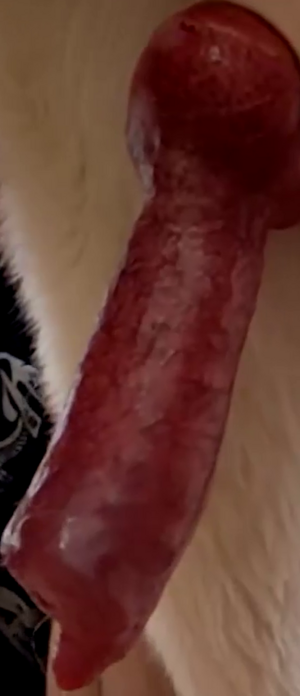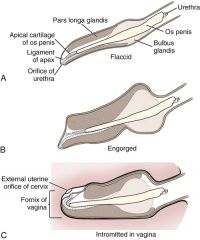Canine Penis
Canine Penis
| This article is a stub. You can help Zoophilia.wiki by expanding it. |
The canine penis is shaped very differently from that of other animals, having a pointed tip, shaft which is usually long and rather thin, and then a large bulbous knot at the base (also known as the bulbus glandis). This knot helps the dog to sometimes become attached to his mate in what is known as the copulatory tie. Their entire penis is inside of a penile sheath.
In the center of the dog’s penis is a bone known as the baculum, os penis, or simply ‘os’. This enables him to achieve penetration before his penis is erect so that he is able to penetrate prior to his knot enlarging in size.
At the tip of the dog’s penis, there is a small opening for the urethra, where sperm and urine exit the body. There is also a separate indentation at the end of the dog’s penis, caused by his baculum interrupting the connective tissue. Some dogs enjoy light pressure applied to this area with the tongue or a wet finger.
| ||||
The entire time the dog’s penis is erect, he will be shooting a clear watery fluid in fits and stops. His precum and actual ejaculate look very similar and will not be as thick or as opaque as a human or horse’s cum. Pressure behind the knot or gentle tugging on the knot will prolong his orgasm and cause him to ejaculate more.
Behind the knot, the penis is very flexible in the horizontal plane, even when erect, which enables the male to get off while hanging.
Comparatively anatomically, the entire part of the dog's penis visible during erection corresponds to the glans (Latin glans ) of the man, which in dogs is, however, divided into two parts: Behind the shaft (Latin pars longa glandis ) lies the "knot" (Latin bulb glandis ). This only swells up during intercourse and ensures that the male dog remains connected to the bitch for some time (between 15 and 30 minutes) ("hanging"). This increases the chances of fertilization and prevents, at least in the short term, other pack members from being able to mate with the bitch.
In contrast to humans, the foreskin ligament (Latin: frenulum ), which connects the glans and foreskin, tears in dogs before they reach sexual maturity. The former connection point remains visible as a "seam" (lat. Raphe ) down the entire length of the shaft. In individual cases, however, the frenulum can persist into sexually mature age and then prevent the dog from digging it out. This condition is rare and can easily be treated by a veterinarian.

The penis size and the knot diameter depend on the breed of dog, but can also vary greatly within a breed.
